What's the Best Solar Security Camera? [2025 Buyer's Guide]
Solar powered security camera offer the perfect blend of convenience and sustainability for home surveillance. With no wires to run and no batteries to constantly replace, these innovative devices harness the sun’s energy to keep your property secure 24/7. Whether you’re looking to monitor a remote location, reduce your carbon footprint, or simply avoid the hassle of frequent battery changes, solar security cameras provide an elegant solution that combines cutting-edge technology with environmental consciousness.
In this comprehensive guide, we’ll explore the top solar powered security cameras of 2025, breaking down their key features, performance in various conditions, and value for money. We’ll help you navigate the growing market of solar-powered surveillance options to find the perfect camera for your specific needs and budget.
Why Choose a Solar Powered Security Camera?
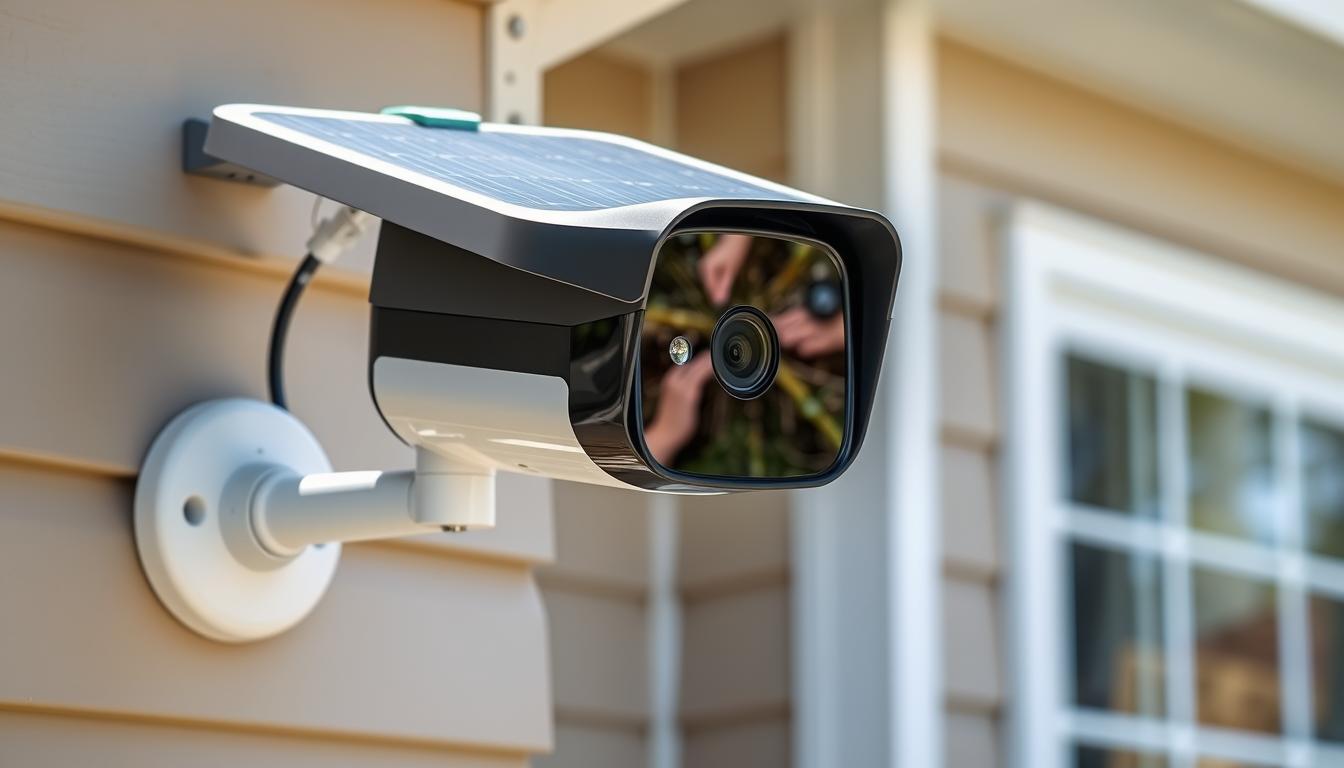
Solar security cameras eliminate the need for wiring or frequent battery changes
Benefits of Solar Security Cameras
- No need for electrical outlets or complex wiring
- Environmentally friendly and energy-efficient
- Reduced long-term operating costs
- Ideal for remote locations without power access
- Continuous operation even during power outages
- Flexible placement options around your property
- Most models include backup battery for nighttime operation
Potential Limitations
- Performance may vary based on sunlight exposure
- Higher initial investment than standard battery cameras
- May require strategic placement for optimal solar charging
- Some models have limited features compared to wired options
- Performance can be affected in extended cloudy conditions
- Solar panel size may impact aesthetic appearance
Did You Know? Most quality solar security cameras only need 3-4 hours of direct sunlight per day to maintain a full charge, making them viable even in regions with variable weather patterns.
Key Features to Consider When Buying a Solar Security Camera
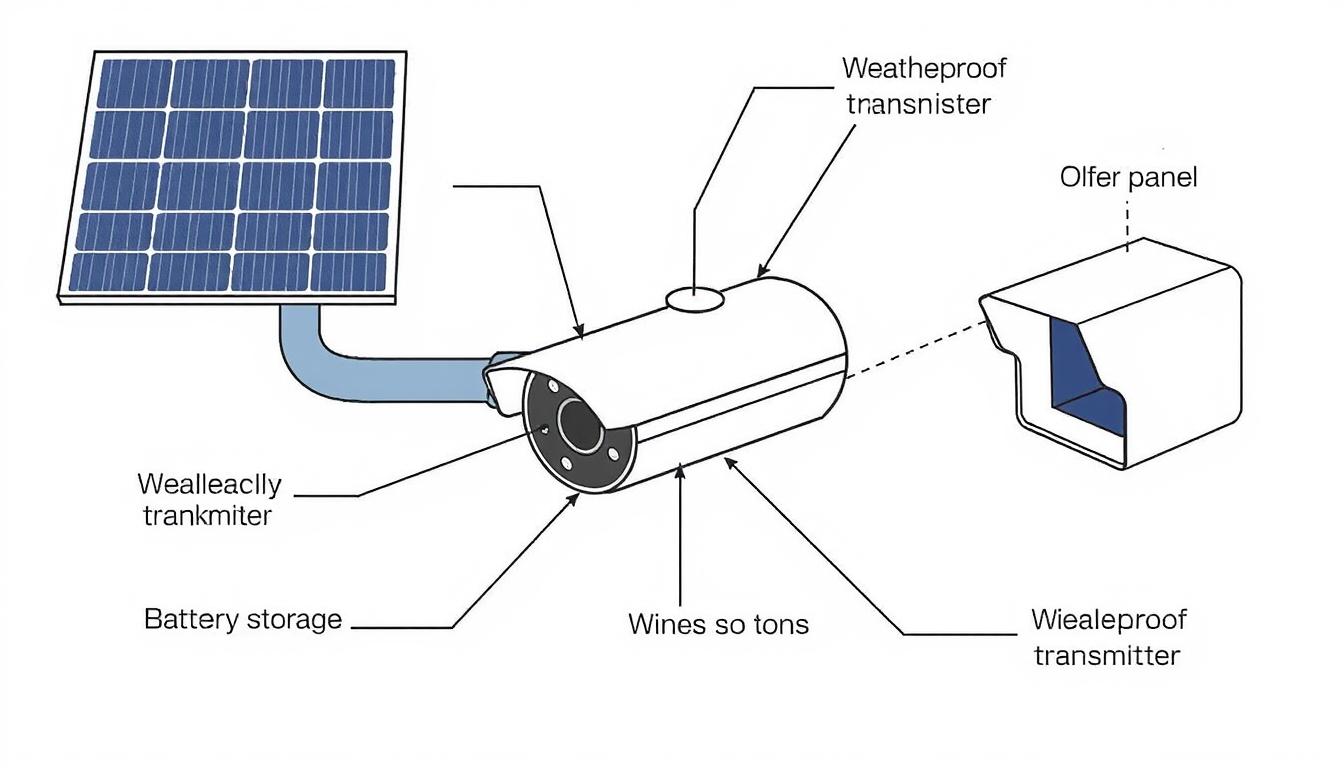
Resolution & Image Quality
Look for cameras with at least 1080p resolution for clear footage. Premium models offer 2K or even 4K resolution, which provides sharper details and better digital zoom capabilities. Higher resolution means you’ll be able to identify faces and license plates more easily, especially at a distance.
Battery Capacity & Efficiency
The battery is crucial for solar cameras as it stores energy for nighttime use. Look for large capacity batteries (at least 10,000mAh) and efficient power management. The best models can operate for weeks even with limited sunlight, ensuring continuous protection regardless of weather conditions.
Solar Panel Quality
Not all solar panels are created equal. Higher efficiency panels can generate more power even in less-than-ideal lighting conditions. Consider whether the panel is integrated or separate, as detachable panels offer more flexibility in positioning for optimal sun exposure.
Motion Detection & Alerts
Advanced motion detection with AI capabilities can distinguish between people, vehicles, and animals, reducing false alerts. Look for customizable motion zones and sensitivity settings to focus on specific areas of your property and minimize unnecessary notifications.
Weather Resistance
Since these cameras will be exposed to the elements year-round, robust weatherproofing is essential. Look for IP65 rating or higher, which ensures protection against dust and water jets from any direction. Some premium models offer enhanced cold-weather performance for reliable operation in winter.
Storage Options
Consider whether you prefer local storage (microSD card), cloud storage, or both. Cloud storage provides backup if the camera is damaged or stolen, but often requires a subscription. Local storage avoids recurring fees but may be vulnerable if the camera is compromised.
Pro Tip: When installing your solar security camera, position the solar panel facing south (in the Northern Hemisphere) or north (in the Southern Hemisphere) at an angle equal to your latitude for optimal sun exposure throughout the year.
Top 5 Solar Security Cameras of 2025
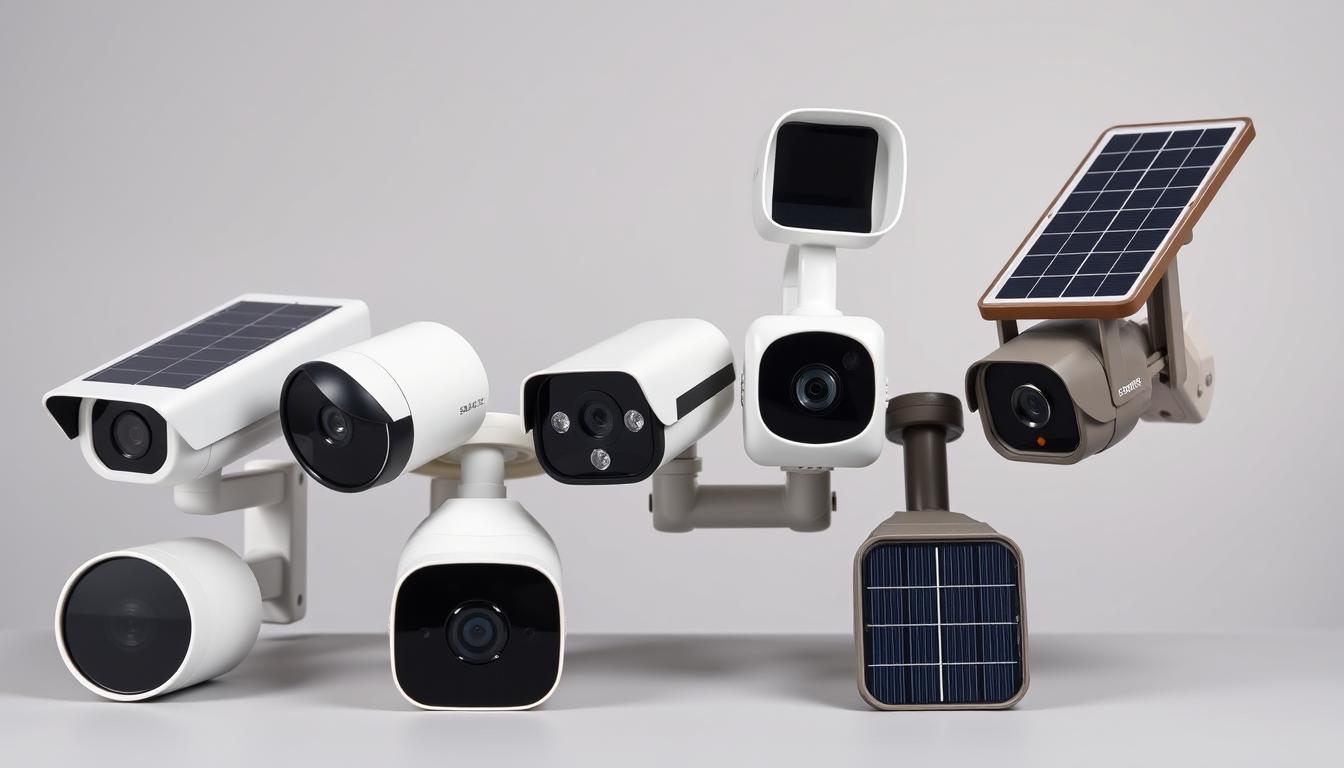
After extensive testing and research, we’ve identified the best solar security cameras on the market today. Each of these models offers reliable performance, quality construction, and excellent value for different needs and budgets.
Model | Resolution | Battery Life | Weather Rating | Field of View | Storage Options | Price Range |
Reolink Argus 3 Pro | 2K (2560×1440) | Up to 4 weeks | IP65 | 122° | MicroSD + Cloud | $119-$149 |
Eufy SoloCam S40 | 2K (2560×1440) | Up to 8 months | IP67 | 135° | 8GB Internal | $199-$229 |
Ring Stick Up Cam Solar | 1080p HD | Continuous | IP65 | 130° | Cloud only | $149-$179 |
Arlo Pro 4 + Solar Panel | 2K (2560×1440) | Continuous | IP65 | 160° | Cloud only | $199-$249 |
Google Nest Cam + Solar Panel | 1080p HD | Continuous | IP54 | 130° | Cloud only | $179-$229 |
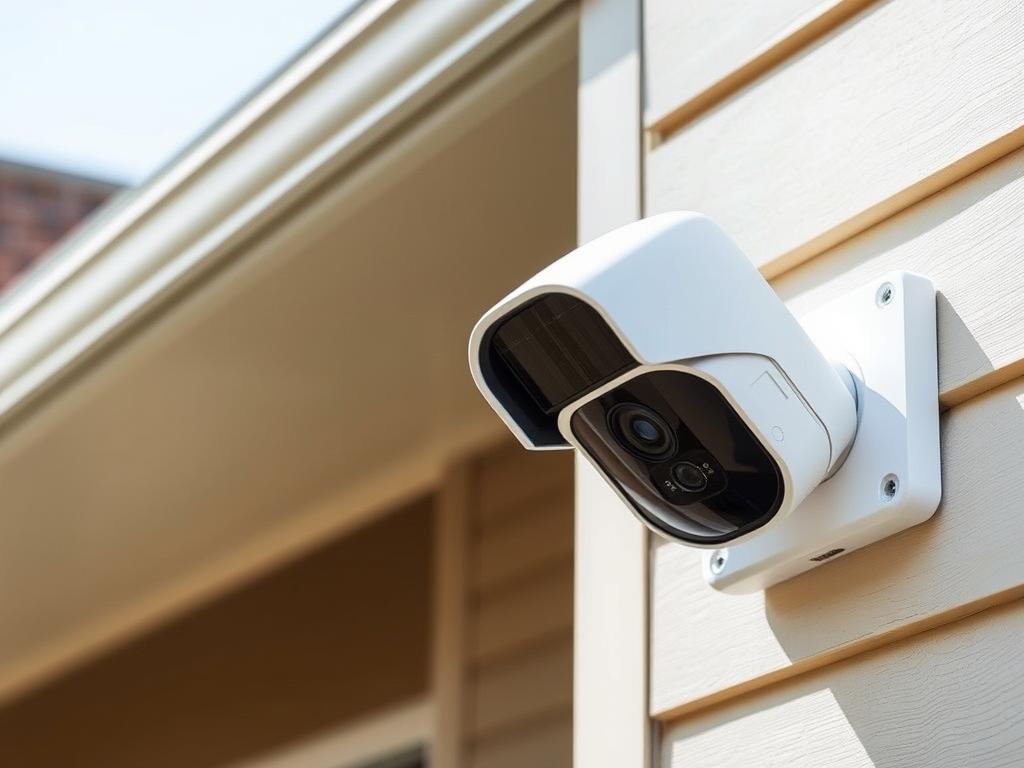
Reolink Argus 3 Pro - Best Overall Solar Security Camera
4.8
Excellent
Image Quality
4.8/5
Battery Life
4.5/5
Solar Efficiency
4.7/5
Weather Resistance
4.6/5
Value for Money
4.9/5
The Reolink Argus 3 Pro stands out as our top pick for the best solar security camera of 2025, offering an exceptional balance of performance, features, and value. With its crisp 2K resolution, smart detection capabilities, and reliable solar charging, this camera delivers everything most homeowners need in a security solution.
Key Features
- 2K Super HD resolution with clear night vision
- Smart detection distinguishes between people and vehicles
- Two-way audio for remote communication
- Built-in spotlight for color night vision
- Local storage via microSD card (up to 128GB)
- Optional cloud storage with flexible plans
- IP65 weatherproof rating for year-round reliability
- Compatible with Google Assistant and Amazon Alexa
Pros
- Excellent image quality day and night
- No subscription required for basic functionality
- Highly efficient solar panel
- Easy DIY installation
- Responsive and accurate motion detection
Cons
- App interface could be more intuitive
- Limited smart home integration beyond Google/Alexa
- Solar panel sold separately in some packages
“After testing dozens of solar security cameras, the Reolink Argus 3 Pro consistently impressed us with its reliability and image quality. Even in less-than-ideal lighting conditions, the solar panel efficiently maintained the battery charge, and the smart detection features significantly reduced false alerts.”
— Our Testing Team
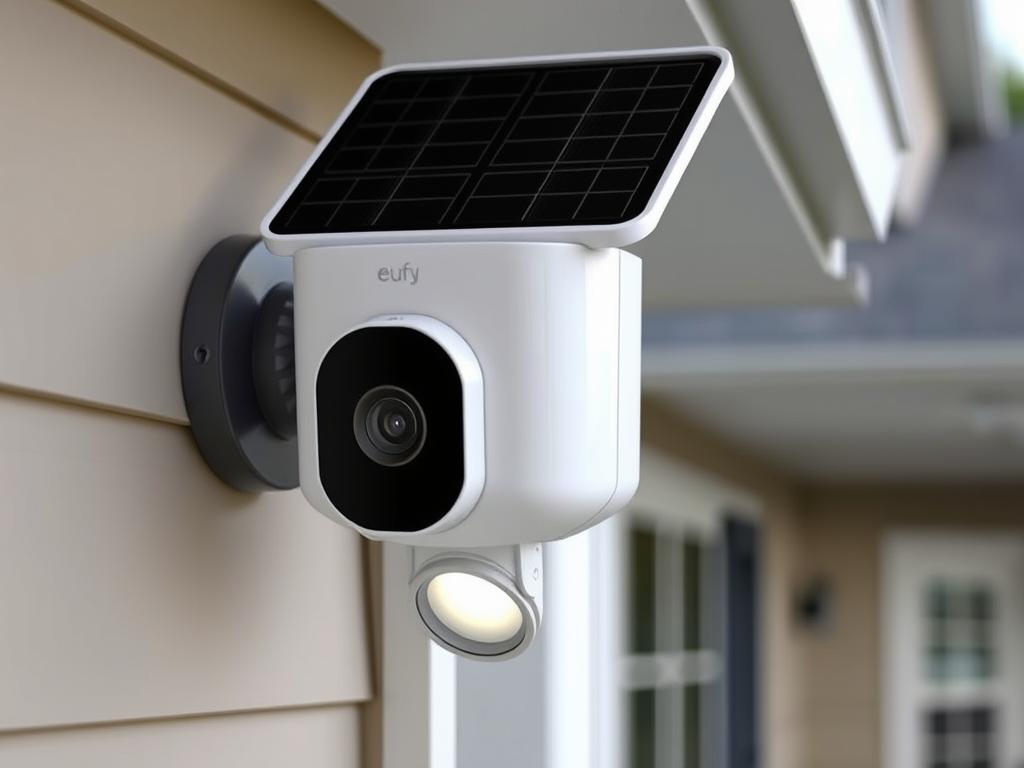
Eufy SoloCam S40 - Best Integrated Solar Panel Camera
4.7
Excellent
Image Quality
4.7/5
Battery Life
4.9/5
Solar Efficiency
4.6/5
Weather Resistance
4.8/5
Value for Money
4.5/5
The Eufy SoloCam S40 takes an innovative approach with its all-in-one design that integrates the solar panel directly into the camera housing. This sleek solution eliminates the need for separate components while delivering impressive performance and exceptional battery life.
Key Features
- 2K resolution with HDR for balanced exposure
- Integrated solar panel and 8GB local storage
- Built-in 600-lumen spotlight for color night vision
- AI-powered human detection with facial recognition
- No hub required – connects directly to Wi-Fi
- IP67 weatherproof rating for extreme conditions
- Up to 8 months of battery life on a single charge
- No monthly subscription fees required
Pros
- Clean, all-in-one design with no separate panel
- Exceptional battery life and efficiency
- Superior weatherproofing (IP67)
- No subscription required for any features
- Powerful built-in spotlight
Cons
- Higher price point than competitors
- Fixed solar panel position limits placement options
- Limited smart home integration
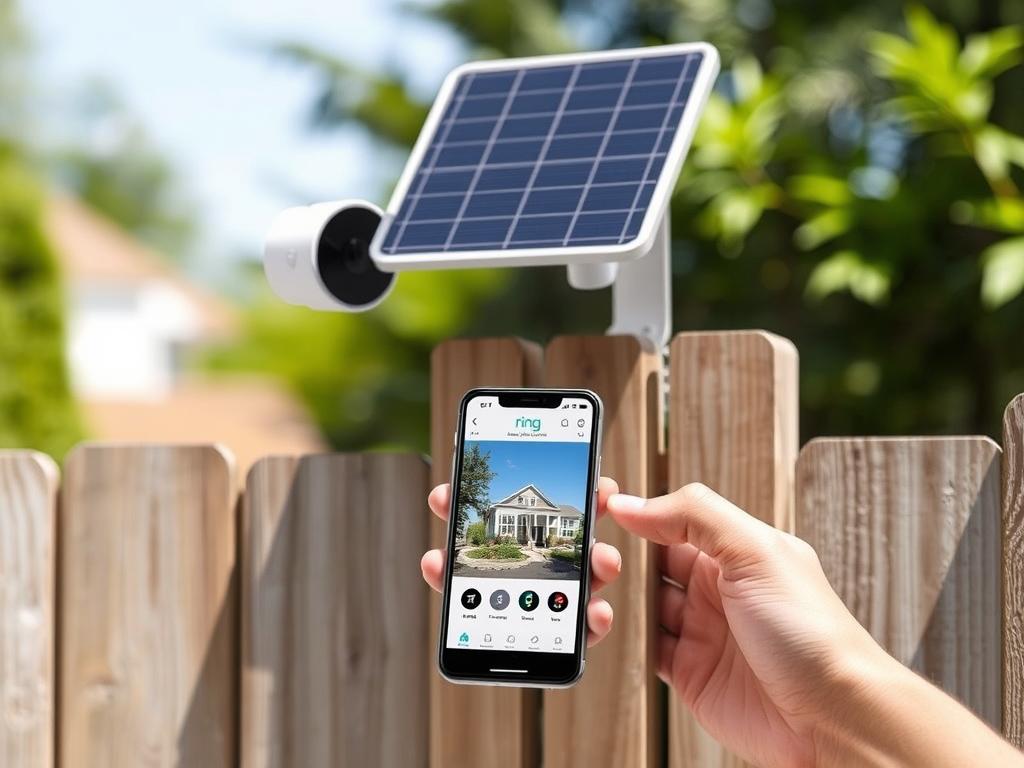
Ring Stick Up Cam Solar - Best for Smart Home Integration
4.5
Very Good
Image Quality
4.3/5
Battery Life
4.5/5
Solar Efficiency
4.4/5
Weather Resistance
4.5/5
Smart Integration
4.9/5
For homeowners already invested in the Amazon/Ring ecosystem, the Ring Stick Up Cam Solar offers seamless integration with Alexa devices and other Ring products. While its resolution is limited to 1080p, its reliable performance and comprehensive smart home features make it an excellent choice for connected homes.
Key Features
- 1080p HD video with night vision
- Adjustable motion detection with customizable zones
- Two-way talk with noise cancellation
- Seamless integration with Ring ecosystem and Alexa
- Flexible mounting options (wall, ceiling, table)
- IP65 weatherproof rating
- Removable battery for indoor charging if needed
- Live View and motion-activated recording
Pros
- Excellent Alexa and Ring ecosystem integration
- Reliable solar charging performance
- Versatile mounting options
- User-friendly app experience
- Quick and easy setup process
Cons
- Limited to 1080p resolution
- Requires Ring Protect subscription for recording
- More expensive than some competitors
Subscription Note: While the Ring Stick Up Cam works without a subscription, you’ll need the Ring Protect Plan (starting at $3.99/month per device or $10/month for unlimited devices) to access recorded video history and share clips.
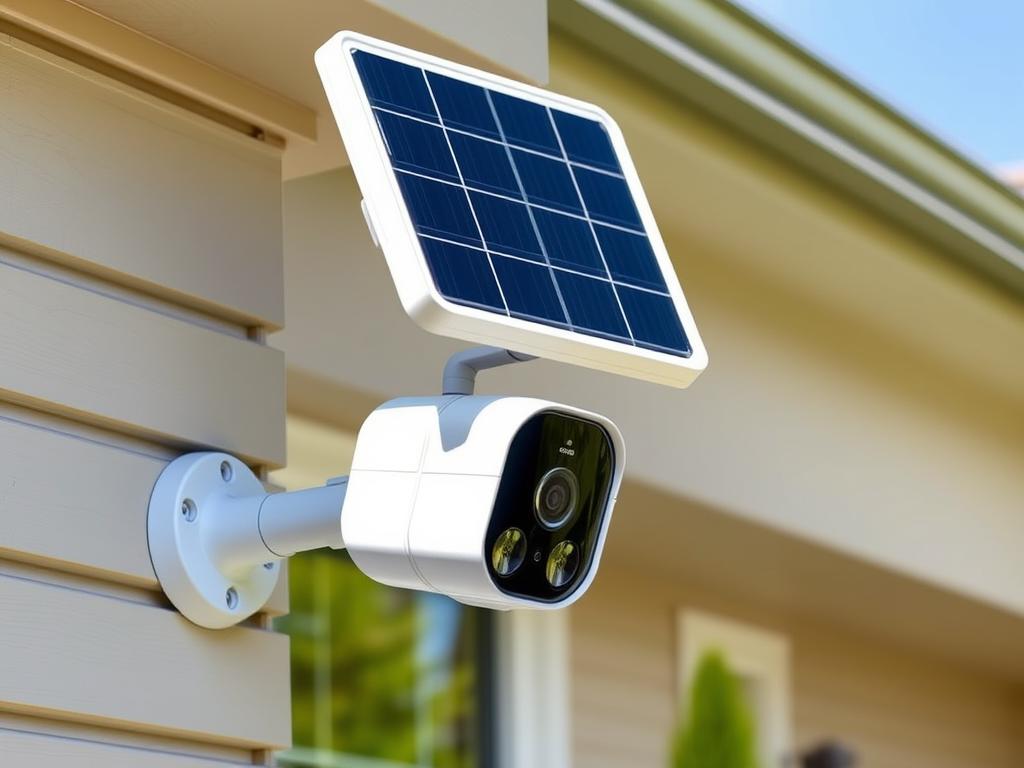
Arlo Pro 4 + Solar Panel - Best Premium Solar Security Camera
4.7
Excellent
Image Quality
4.8/5
Battery Life
4.4/5
Solar Efficiency
4.5/5
Weather Resistance
4.6/5
Smart Features
4.9/5
The Arlo Pro 4 paired with Arlo’s solar panel represents the premium end of solar security cameras, offering exceptional image quality, advanced AI detection, and the widest field of view on our list. For those willing to invest in top-tier security, this combination delivers professional-grade surveillance capabilities.
Key Features
- 2K HDR video with enhanced color night vision
- Ultra-wide 160° diagonal field of view
- Integrated spotlight for color night vision
- Advanced AI detection (people, animals, vehicles, packages)
- Direct Wi-Fi connection (no hub required)
- Two-way audio with noise cancellation
- IP65 weatherproof rating
- Compatible with Alexa, Google Assistant, and Apple HomeKit
Pros
- Superior image quality with HDR
- Widest field of view (160°)
- Most advanced AI detection capabilities
- Excellent smart home compatibility
- Premium build quality and design
Cons
- Highest price point on our list
- Requires subscription for cloud recording
- Solar panel sold separately
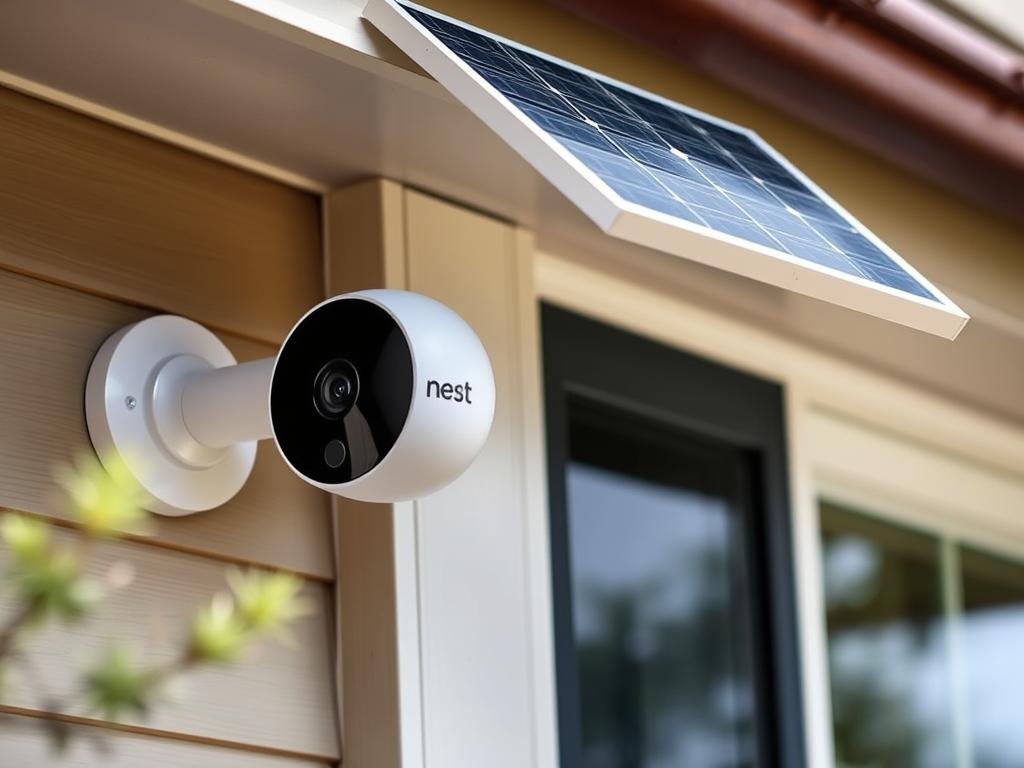
Google Nest Cam + Wasserstein Solar Panel - Best for Google Home Users
4.4
Very Good
Image Quality
4.3/5
Battery Life
4.0/5
Solar Efficiency
4.2/5
Weather Resistance
4.1/5
Smart Features
4.8/5
The Google Nest Cam paired with Wasserstein’s solar panel offers the most seamless experience for Google Home users. While limited to 1080p resolution, it excels with intelligent features like familiar face detection and three hours of free event video history without requiring a subscription.
Key Features
- 1080p HD video with HDR and night vision
- Free 3-hour event video history
- Advanced AI with familiar face detection
- Customizable activity zones
- Two-way audio with noise cancellation
- IP54 weather resistance
- Seamless Google Home integration
- On-device processing for enhanced privacy
Pros
- Best Google Home integration
- Free cloud storage (3 hours)
- Superior AI and face recognition
- Excellent app experience
- On-device processing for faster alerts
Cons
- Limited to 1080p resolution
- Lower weather resistance rating (IP54)
- Solar panel is third-party (Wasserstein)
- Higher subscription cost for extended storage
Installation Tip: The Wasserstein solar panel for Google Nest Cam works best when receiving at least 3-4 hours of direct sunlight daily. In regions with limited sunlight, consider positioning the panel separately from the camera using the extended cable for optimal sun exposure.
Solar Security Camera Buying Guide: How to Choose the Right One
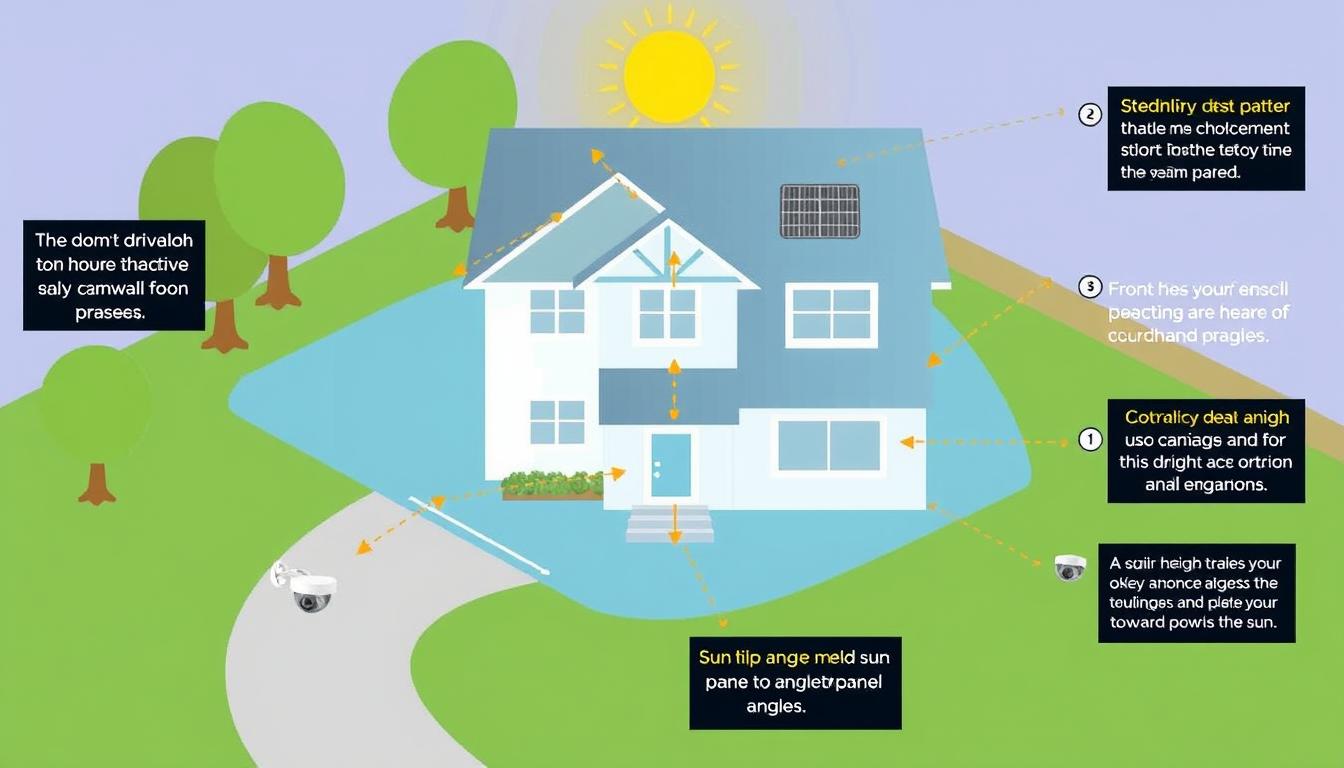
Consider Your Location
Your geographic location and specific installation spot significantly impact solar camera performance. Consider:
- Average sunlight hours in your region
- Seasonal variations in sun exposure
- Potential shade from trees or structures
- Direction of sun exposure (south-facing is ideal in Northern Hemisphere)
- Local weather patterns and extremes
Assess Your Security Needs
Different properties have different security requirements. Think about:
- Size of area you need to monitor
- Specific entry points requiring coverage
- Whether you need deterrence (visible cameras) or discreet monitoring
- If you need two-way communication capabilities
- Whether night vision or spotlight features are essential
Evaluate Technical Requirements
Match technical specifications to your specific needs:
- Resolution needs (1080p is sufficient for most, 2K+ for detail at distance)
- Field of view requirements (wider for open areas)
- Wi-Fi signal strength at installation locations
- Storage preferences (local vs. cloud)
- Smart home ecosystem compatibility
Understanding Solar Panel Efficiency
Not all solar panels are created equal, and understanding efficiency factors can help you make a better choice:
Panel Size and Power Output
Larger panels generally produce more power, but efficiency matters more than size alone. Look for panels rated at least 2.5W for most security cameras. Higher efficiency panels can generate more power even in less-than-ideal conditions.
Integrated vs. Separate Panels
Integrated panels (like on the Eufy SoloCam S40) offer a cleaner look but less flexibility in positioning. Separate panels with cables allow you to place the camera in shade while positioning the panel in direct sunlight for optimal charging.
Battery Capacity
The solar panel charges the camera’s internal battery, so battery capacity matters. Look for at least 6000mAh capacity, with premium models offering 10000mAh or more. Larger batteries provide longer backup during cloudy periods.
Power Management
Advanced power management features like sleep modes, motion-activated recording, and adjustable video quality settings help maximize battery life and solar efficiency. Some cameras automatically adjust settings based on available battery power.
Budget Consideration
While solar security cameras typically cost more upfront than standard battery or wired models, they often prove more economical over time by eliminating the need for frequent battery replacements or professional wiring installation.
Frequently Asked Questions About Solar Security Cameras
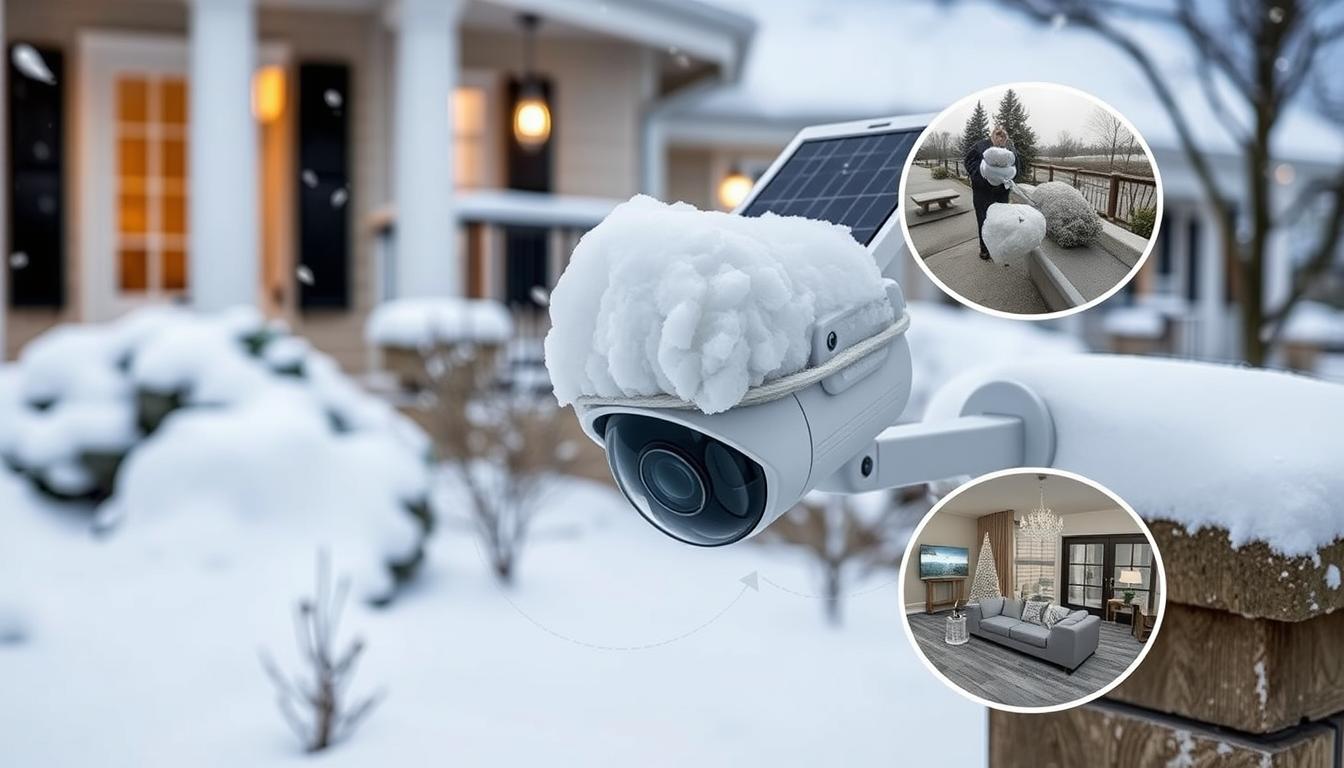
How long do solar security cameras last?
Most quality solar security cameras have a lifespan of 3-5 years for the camera unit itself. The solar panels typically last much longer, often 10+ years with minimal degradation in performance. The internal battery is usually the first component to degrade, with most rechargeable batteries maintaining good performance for 2-3 years before gradually losing capacity.
Do solar security cameras work in winter or cloudy weather?
Yes, quality solar security cameras will work in winter and during cloudy periods, though with some limitations. Most models store enough energy in their batteries to operate for several days to weeks without direct sunlight. Solar panels can still generate power in cloudy conditions, just at reduced efficiency (typically 10-25% of their rated output). In winter, snow accumulation on panels can block light absorption, so occasional cleaning may be necessary. Cold temperatures can also reduce battery efficiency, so cameras rated for extreme temperatures will perform better in winter conditions.
How much sunlight do solar security cameras need?
Most solar security cameras require 3-4 hours of direct sunlight daily to maintain optimal charging. However, this varies by model and efficiency. High-efficiency models like the Ring Solar Panel can function with as little as 1-2 hours of direct sunlight or several hours of indirect light. For consistent performance, aim to position the solar panel where it will receive the maximum possible sunlight throughout the day, ideally facing south in the Northern Hemisphere or north in the Southern Hemisphere.
Do solar security cameras require Wi-Fi?
Most consumer solar security cameras require Wi-Fi to transmit video feeds, send notifications, and enable remote viewing. However, there are exceptions designed for remote locations without Wi-Fi access. These typically use cellular data connections (requiring a data plan) or local storage options where footage is recorded to an SD card and must be physically retrieved. If you need a camera for an area without reliable Wi-Fi, look specifically for cellular-enabled models or consider extending your Wi-Fi network with a range extender.
Are solar security cameras weatherproof?
Most solar security cameras are designed for outdoor use and feature weatherproof ratings, typically expressed as IP (Ingress Protection) ratings. Look for at least IP65 rating, which indicates dust-tight construction and protection against water jets from any direction. Higher ratings like IP67 (found on the Eufy SoloCam S40) offer even better protection, including temporary immersion in water. Beyond the IP rating, consider the operating temperature range, especially if you live in an area with extreme heat or cold.
Do I need a subscription for solar security cameras?
It depends on the brand and your storage preferences. Some cameras like the Eufy SoloCam S40 and Reolink Argus 3 Pro offer local storage options (microSD card) with no subscription required. Others, like Ring and Arlo, require subscriptions to access recorded video history and advanced features. Google Nest offers a middle ground with 3 hours of free event history but requires a subscription for longer storage periods. When comparing costs, factor in any subscription fees over the expected lifetime of the camera.
Conclusion: Choosing the Best Solar Security Camera for Your Needs

Solar-powered security cameras represent the perfect intersection of convenience, sustainability, and modern security technology. By eliminating the need for wiring or frequent battery changes, these innovative devices provide reliable surveillance with minimal maintenance, making them ideal for both urban homes and remote properties.
After thorough testing and comparison, the Reolink Argus 3 Pro stands out as our top overall recommendation for most users, offering an excellent balance of performance, features, and value. Its 2K resolution, reliable solar charging, and flexible storage options make it a versatile choice that doesn’t require ongoing subscription fees.
For those seeking an all-in-one solution with no separate components, the Eufy SoloCam S40 delivers exceptional performance with its integrated design. Users already invested in specific smart home ecosystems may prefer the Ring Stick Up Cam Solar (for Amazon/Alexa users) or the Google Nest Cam with Wasserstein Solar Panel (for Google Home enthusiasts).
When making your final decision, consider your specific location, security needs, and technical requirements as outlined in our buying guide. Remember that the best solar security camera is ultimately the one that fits your unique situation while providing reliable performance throughout the seasons.
Ready to secure your home with solar power?
Our top pick combines excellent performance, reliability, and value:
